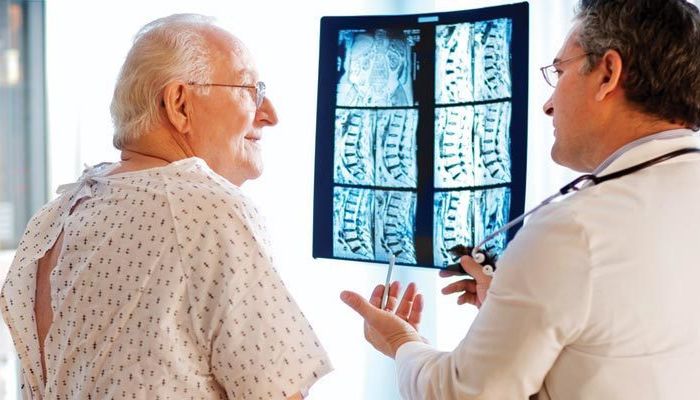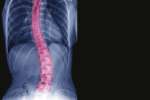Spinal fusion has come a long way from early operations using wires and big incisions. The advent of screws and rods to realign and stabilize the bones of the spine has vastly improved outcomes and allowed the correction of spinal deformities that would have otherwise been impossible. Minimally invasive techniques have dramatically reduced the recovery time after fusion surgery and made surgery safer as well.
Continuing that trend, advanced imaging and robotic technologies have been applied to spinal surgery with impressive results. Highly detailed CAT scans can now be used to create three-dimensional models of a patient’s spine. These models can then be used by a surgeon to select the ideal trajectory for any instrument or screw placed into the spine. The plan and imaging data can then be sent to a robotic arm, which locates a patient’s spine in three-dimensional space and identifies the preplanned trajectories with a high level of accuracy.
Application of this technology is particularly beneficial in minimally invasive spinal fusion, because screws are placed into the spine percutaneously, without the surgeon being able to directly visualize where the screw is going. Classically, surgeons relied on repeated x-rays to track the placement of the screw into the spine. Now, the trajectory for the screw is given by the robot – reducing the patient’s exposure to radiation during the operation and removing the variability related to x-ray technique.
Patients with complex spinal anatomy can also benefit from the increased precision robotics provides. Scoliosis, kyphosis, high-grade slipped discs: all these conditions can distort the normal shape of the bones in the spine, making placement of screws difficult. By having access to a detailed three-dimensional model, a surgeon can plan the placement of each screw, and the robot can identify the proper trajectory to put that screw into place.
Drs. Amundson and VanLandingham are both certified on the Mazor X robot—the newest generation robot for spine surgery from the company that invented the first robotic spine system. The newer system benefits from increased speed and accuracy—allowing fusions to be performed with less time under anesthesia. Precise trajectory calculations result in the smallest possible incisions for minimally invasive fusions while heightened accuracy lowers the risk of a misplaced screw.
The surgeons at NewSouth NeuroSpine continue to stay at the forefront of technological advances in spinal surgery, aiming to bring our patients the best possible outcomes through the most minimal and precise operation.






